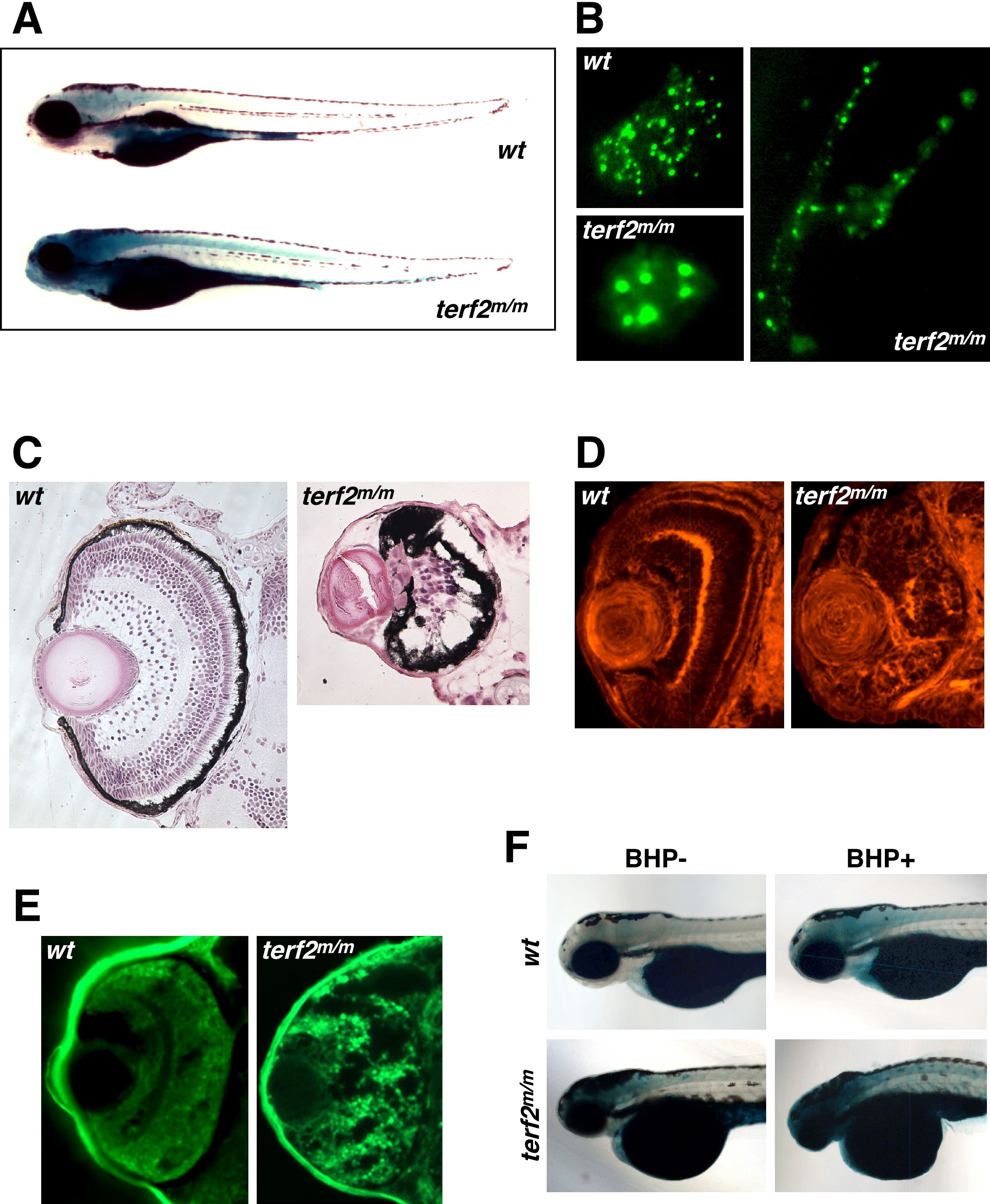Fig. 4
Mutant terf2 animals with high SA-β-gal activity and retinal neurodegenerative phenotypes.
(A) 4.5-day old (4.5 dpf) homozygous terf2m/m zebrafish larvae show high SA-β-gal activity, particularly in the brain and spinal cord, having the small eyes and head (lower image), compared with wild-type (upper image). (B) Abnormally enlarged telomere speckles (lower left panel) and aberrant nuclear shapes (right panel) can be observed in homozygous terf2m/m embryos, compared with normal telomere speckles in a nuclear of the wild-type embryo (upper left panel) at 5 dpf. (C) H&E staining of transverse sections through the retinas of homozygous terf2m/m (right panel) and wild-type zebrafish embryos (left panel) at 5 dpf. (D) Embryonic zebrafish retinas were stained with phalloidin to visualize the actin filaments in the plexiform layers, which revealed obvious structural defects in the homozygous terf2m/m mutant (right panel) compared with a wild-type sibling (left panel) at 3 dpf. (E) Neurodegeneration in the retina was histologically detected by performing Fluoro-Jade B staining in homozygous terf2m/m mutant (right panel), but was not evident in the wild-type embryo (left panel) at 2 dpf. (F) Homozygous terf2 mutant embryos and wild-type controls were exposed to 350 μM BHP from 6 hpf to 4 dpf. Enhanced SA-β-gal staining with a more severe morphology in eyes and heads are observed in BHP-treated terf2 mutant embryos at 4 dpf (lower right panel).
Image
Figure Caption
Figure Data
Acknowledgments
This image is the copyrighted work of the attributed author or publisher, and
ZFIN has permission only to display this image to its users.
Additional permissions should be obtained from the applicable author or publisher of the image.
Full text @ PLoS Genet.

